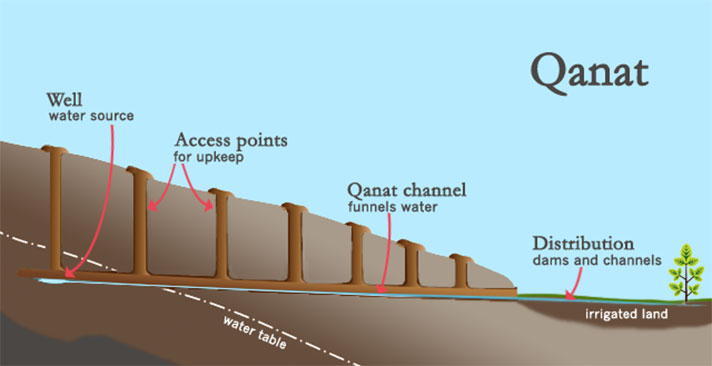Qanat (Water Supply System)
A qanat is a subterranean waterway that slopes gently and transports water from an aquifer or water well to homes and farmland. Both drinking water and crop irrigation are done using it. Water is supplied from deep wells via an antiquated system of vertical access shafts.
In hot, arid, and semi-arid conditions, it is still a dependable method of providing water to populated areas and for irrigation. Around the beginning of the first millennium BC, the Persians of Iran invented it. From there, it slowly migrated westward and eastward.
The qanat tunnels were dug by hand and were the same size as the person excavating them. They may be many kilometers long. The vertical shafts, which were sunk at intervals of roughly 20 to 30 meters, served as ventilation and access points for repairs in addition to being used to remove excavated materials.
From pre-mountainous alluvial fans, the main qanat tunnels sloped down to an outlet near communities. The canals then delivered the water to the fields for irrigation. Persian farmers were able to withstand extended dry spells without access to surface water because to these constructions, which were created with excellent scientific foresight. Many locations in China, Morocco, and America still employ qanats.












